Abstract
Lymph node cells from mice painted with the contact sensitizers picryl chloride or oxazolone produce antigen-specific T-helper factor. This is detected by its ability to increase the contact sensitivity response to the injection of small numbers of haptenized spleen cells into the footpads of naive recipients. The production of this T-helper factor is inhibited by the injection of spleen cells from mice given water-soluble, chemically reactive hapten such as picrylsulphonic (trinitrobenzenesulphonic) acid--an agent which induces unresponsiveness. The cells which inhibit the production of T-helper factor are antigen-specific T-suppressor cells. They are sensitive to cyclophosphamide given before the injection of picrylsulphonic acid, but are unaffected by adult thymectomy. In this respect, they resemble the family of Ts-aff which inhibit the development of contact sensitivity, specific antigen-induced lymph node proliferation and the specific IgG response, and differ from the T-suppressor efferent cell (Ts-eff) which acts at the expression stage of the contact sensitivity reaction. These results are fully compatible with the view that the Ts-aff inhibits the development of contact sensitivity by blocking the production of antigen-specific T-helper factor.
Full text
PDF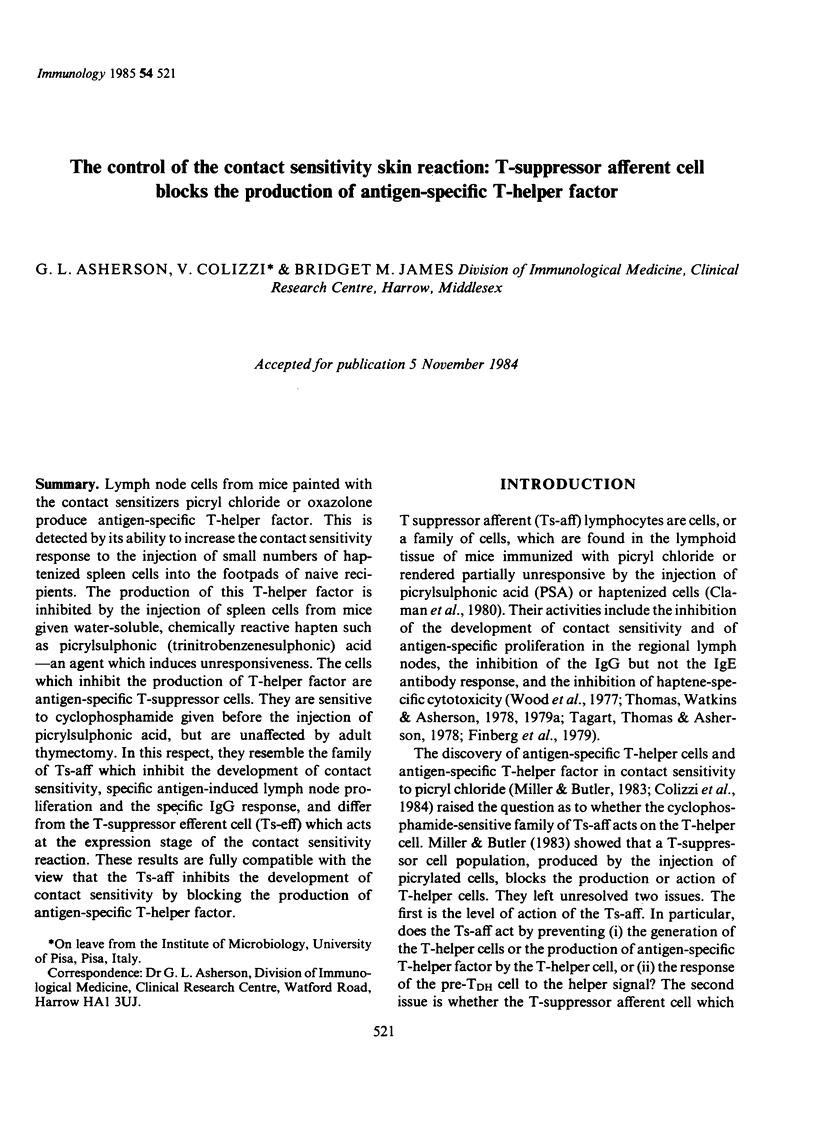
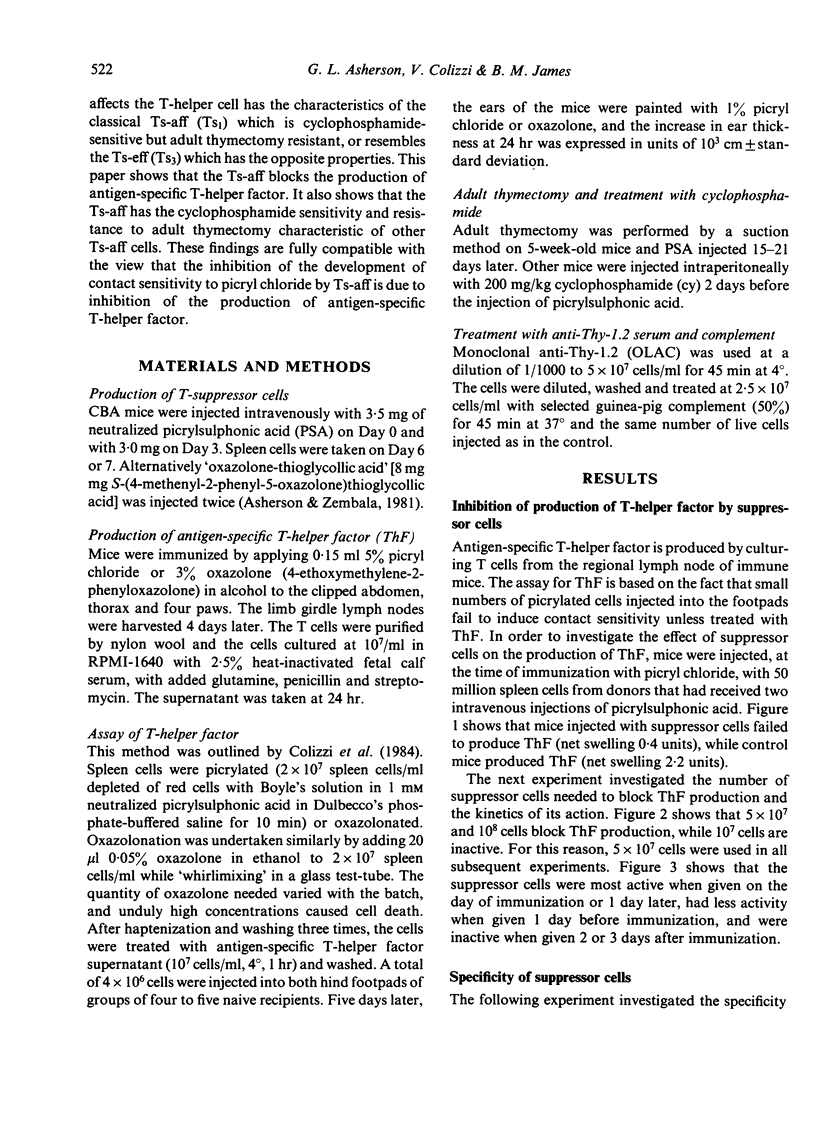
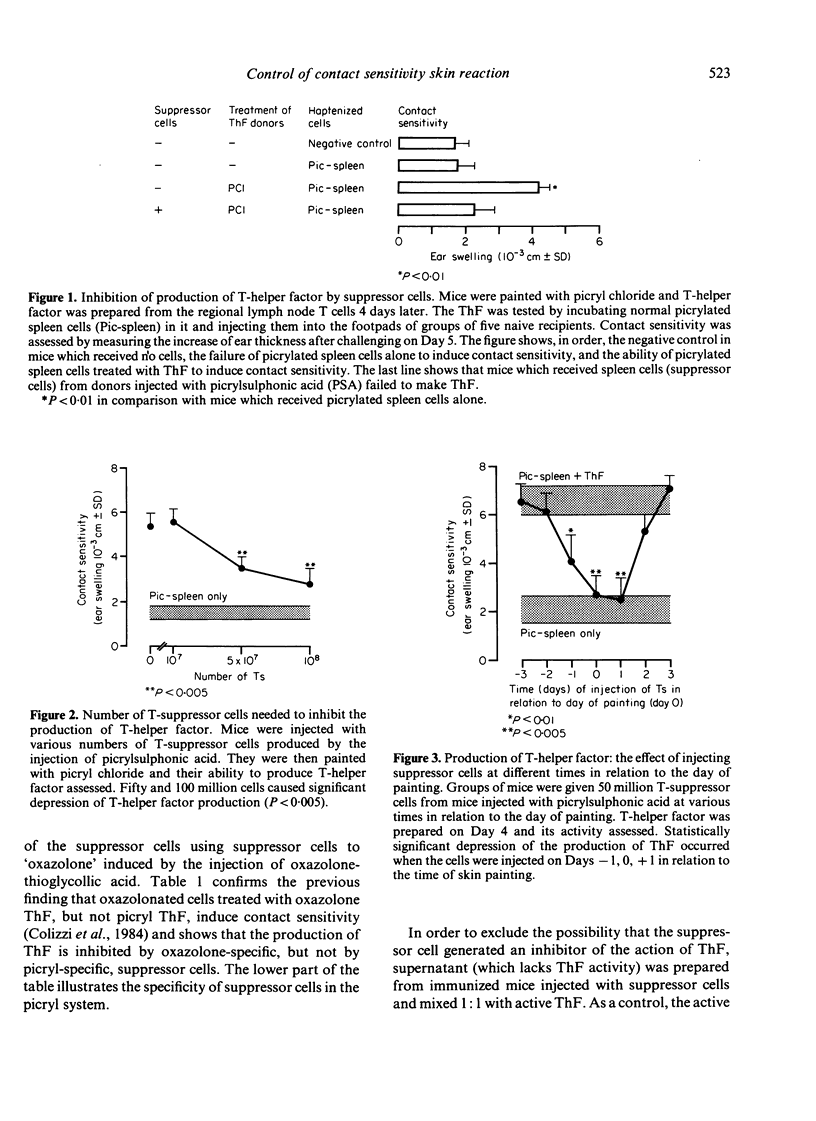
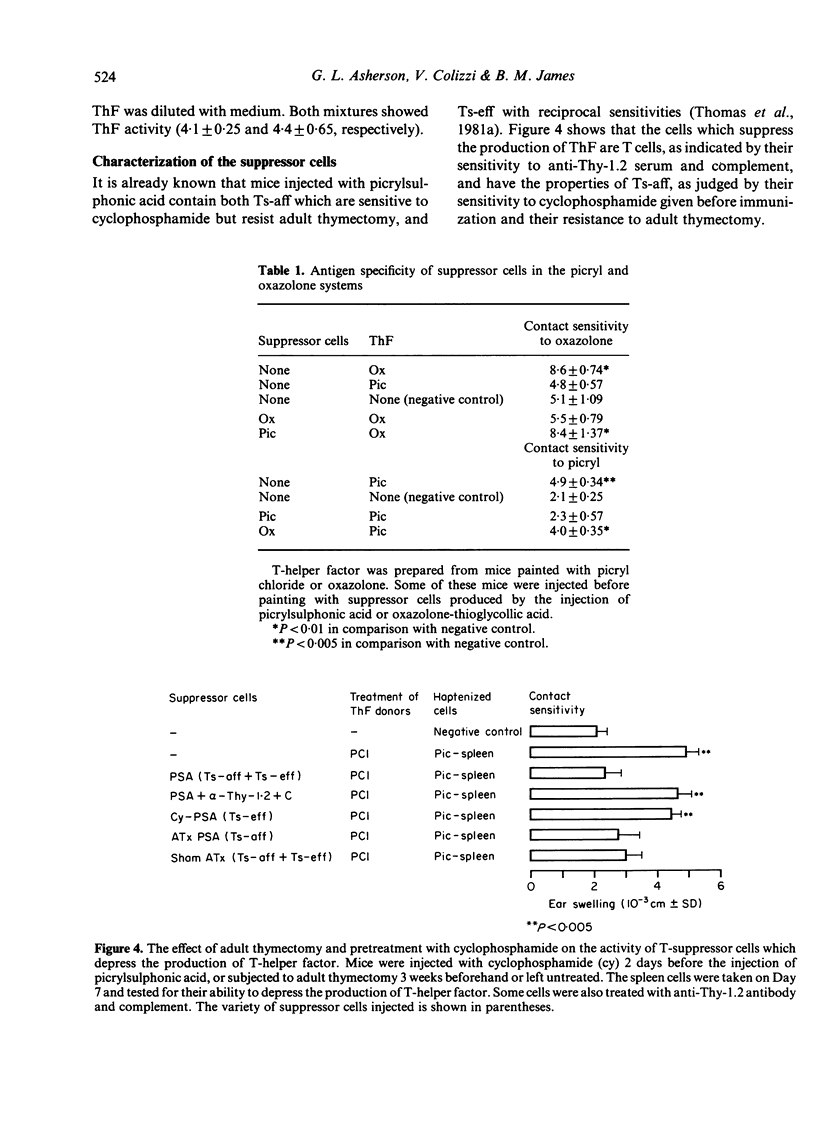
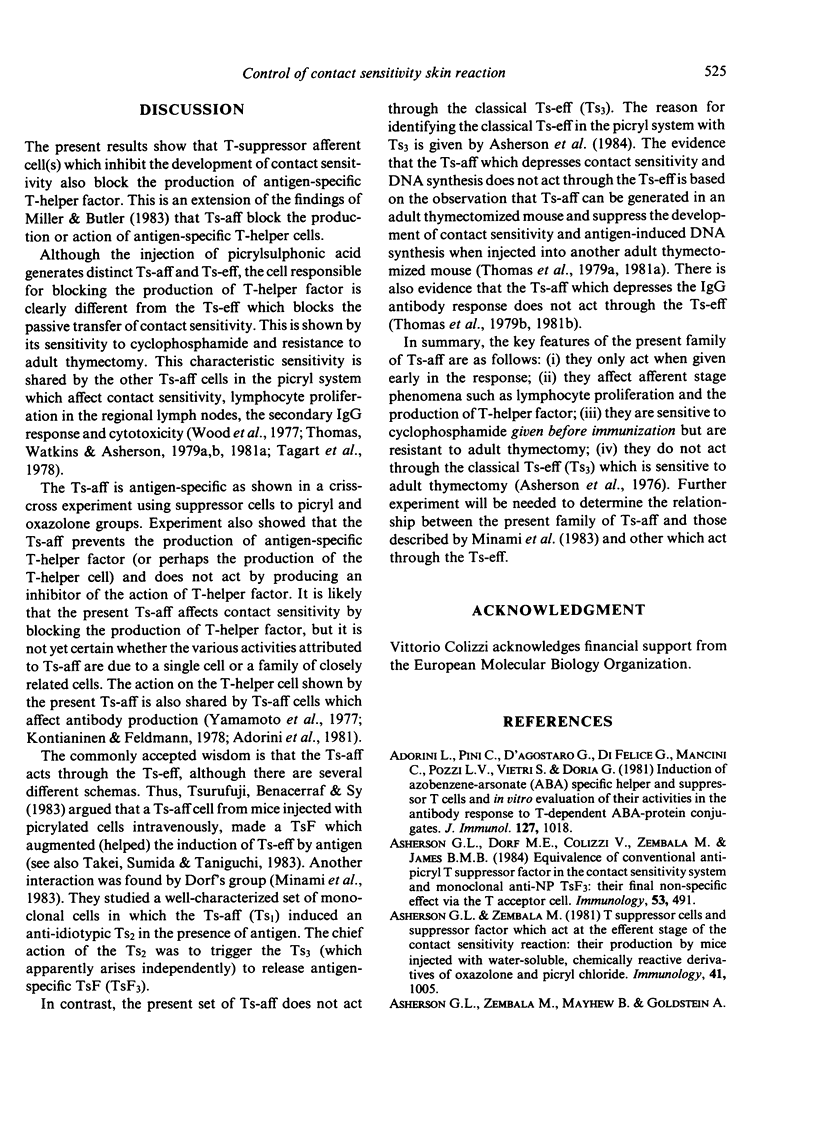
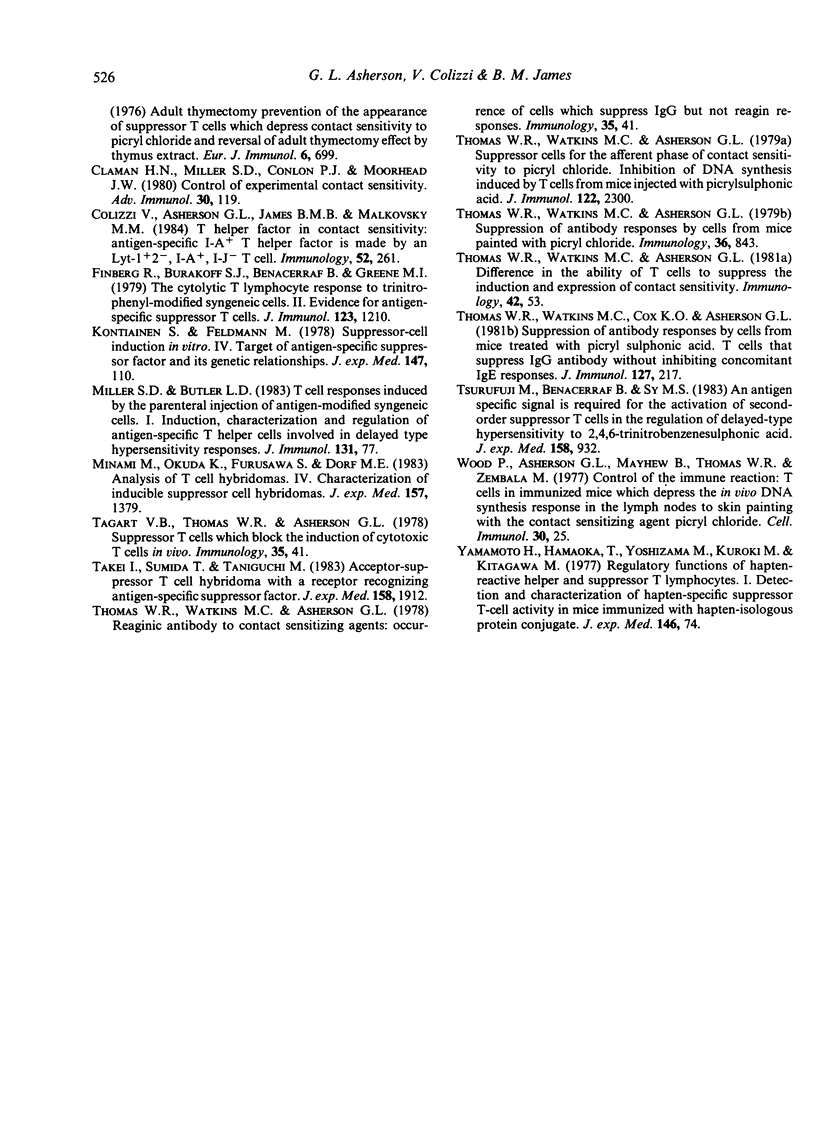
Selected References
These references are in PubMed. This may not be the complete list of references from this article.
- Adorini L., Pini C., D'Agostaro G., Di Felice G., Mancini C., Pozzi L. V., Vietri S., Doria G. Induction of azobenzenearsonate- (ABA) specific helper and suppressor T cells and in vitro evaluation of their activities in the antibody response to T-dependent ABA-protein conjugates. J Immunol. 1981 Sep;127(3):1018–1023. [PubMed] [Google Scholar]
- Asherson G. L., Dorf M. E., Colizzi V., Zembala M., James B. M. Equivalence of conventional anti-picryl T suppressor factor in the contact sensitivity system and monoclonal anti-NP TsF3: their final non-specific effect via the T acceptor cell. Immunology. 1984 Nov;53(3):491–497. [PMC free article] [PubMed] [Google Scholar]
- Asherson G. L., Zembala M. T suppressor cells and suppressor factor which act at the efferent stage of the contact sensitivity skin reaction: their production by mice injected with water-soluble, chemically reactive derivatives of oxazolone and picryl chloride. Immunology. 1980 Dec;41(4):1005–1013. [PMC free article] [PubMed] [Google Scholar]
- Colizzi V., Asherson G. L., James B. M., Malkovsky M. T helper factor in contact sensitivity: antigen-specific I-A+ helper factor is made by an Lyt-1+2-, I-A+, I-J- T cell. Immunology. 1984 Jun;52(2):261–267. [PMC free article] [PubMed] [Google Scholar]
- Finberg R., Burakoff S. J., Benacerraf B., Greene M. I. The cytolytic T lymphocyte response to trinitrophenyl-modified syngeneic cells. II. Evidence for antigen-specific suppressor T cells. J Immunol. 1979 Sep;123(3):1210–1214. [PubMed] [Google Scholar]
- Kontiainen S., Feldmann M. Suppressor-cell induction in vitro. IV. Target of antigen-specific suppressor factor and its genetic relationships. J Exp Med. 1978 Jan 1;147(1):110–122. doi: 10.1084/jem.147.1.110. [DOI] [PMC free article] [PubMed] [Google Scholar]
- Miller S. D., Butler L. D. T cell responses induced by the parenteral injection of antigen-modified syngeneic cells. I. Induction, characterization, and regulation of antigen-specific T helper cells involved in delayed-type hypersensitivity responses. J Immunol. 1983 Jul;131(1):77–85. [PubMed] [Google Scholar]
- Minami M., Okuda K., Furusawa S., Dorf M. E. Analysis of T cell hybridomas. IV. Characterization of inducible suppressor cell hybridomas. J Exp Med. 1983 May 1;157(5):1379–1395. doi: 10.1084/jem.157.5.1379. [DOI] [PMC free article] [PubMed] [Google Scholar]
- Takei I., Sumida T., Taniguchi M. Acceptor-suppressor T cell hybridoma with a receptor recognizing antigen-specific suppressor factor. J Exp Med. 1983 Dec 1;158(6):1912–1923. doi: 10.1084/jem.158.6.1912. [DOI] [PMC free article] [PubMed] [Google Scholar]
- Thomas W. R., Watkins M. C., Asherson G. L. Suppression of antibody responses by cells from mice painted with picryl chloride. Immunology. 1979 Apr;36(4):843–850. [PMC free article] [PubMed] [Google Scholar]
- Thomas W. R., Watkins M. C., Asherson G. L. Suppressor cells for the afferent phase of contact sensitivity to picryl chloride: inhibition of DNA synthesis induced by T cells from mice injected with picryl sulfonic acid. J Immunol. 1979 Jun;122(6):2300–2303. [PubMed] [Google Scholar]
- Thomas W. R., Watkins M. C., Cox K. O., Asherson G. L. Suppression of antibody responses by cells from mice treated with picryl sulfonic acid: T cells that suppress IgG antibody without inhibiting concomitant IgE responses. J Immunol. 1981 Jul;127(1):217–220. [PubMed] [Google Scholar]
- Tsurufuji M., Benacerraf B., Sy M. S. An antigen-specific signal is required for the activation of second-order suppressor T cells in the regulation of delayed-type hypersensitivity to 2,4,6-trinitrobenzene sulfonic acid. J Exp Med. 1983 Sep 1;158(3):932–945. doi: 10.1084/jem.158.3.932. [DOI] [PMC free article] [PubMed] [Google Scholar]
- Wood P., Asherson G. L., Mayhew B., Thomas W. R., Zembala M. Control of the immune reaction: T cells in immunized mice which depress the in vivo DNA synthesis response in the lymph nodes to skin painting with the contact sensitizing agent picryl chloride. Cell Immunol. 1977 Apr;30(1):25–34. doi: 10.1016/0008-8749(77)90044-2. [DOI] [PubMed] [Google Scholar]
- Yamamoto H., Hamaoka T., Yoshizawa M., Kuroki M., Kitagawa M. Regulatory functions of hapten-reactive helper and suppressor T lymphocytes. I. Detection and characterization of hapten-reactive suppressor T-cell activity in mice immunized with hapten-isologous protein conjugate. J Exp Med. 1977 Jul 1;146(1):74–90. doi: 10.1084/jem.146.1.74. [DOI] [PMC free article] [PubMed] [Google Scholar]


